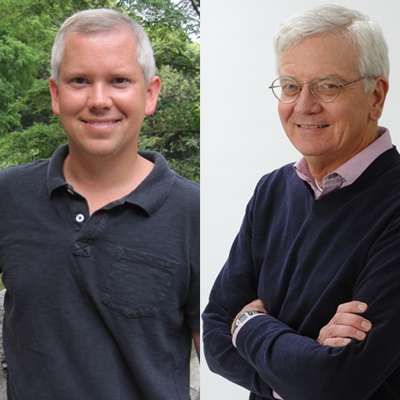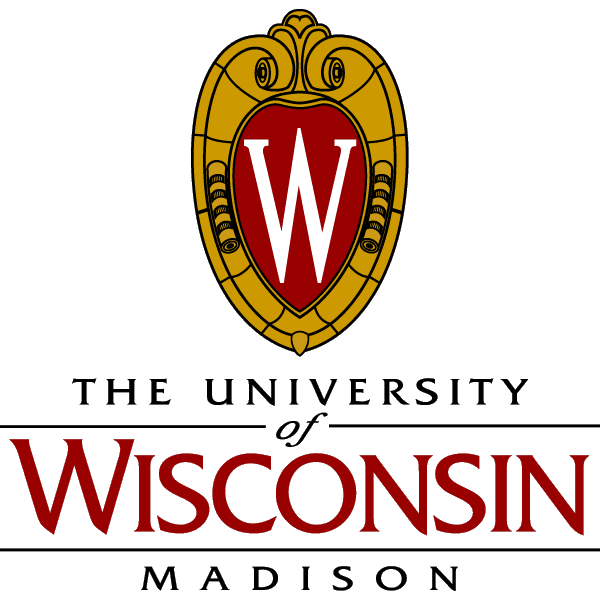Understanding the evolution of corn to improve agriculture
Imagine yourself 10,000 years ago before the Agricultural Revolution when there were no crop plants and only wild plants to eat. At this time, ancient hunter-gatherers began the process of domesticating wild plants to create our modern crops. To do this, they applied selective breeding. Each harvest season they kept seed from the best plants to produce the next crop the following year. Over many generations, they transformed wild species into our current domesticated crops.
Modern scientists did not get to observe the steps in the domestication process so we don’t fully understand the steps involved in the transformation of wild plants into crops. But what if we could redo the domestication of a crop? Start with its ancestor and apply selective breeding to convert it into a crop. If this happens, we can directly observe how genes and the genome are altered by domestication and better understand this important process. Dr. Matthew Hufford, Assistant Professor in the Department of Ecology, Evolution, and Organismal Biology at Iowa State University, and Dr. John Doebley, Professor in the Department of Genetics at University of Wisconsin-Madison are interested in developing a new corn through a process of “redomestication.” They will begin with teosinte, a wild grass only recently discovered as maize's ancestor.
While many have studied the domestication process by comparing crops to their wild relatives, no one has yet attempted to redomesticate a crop. Previous investigations of historical domestication rely on only a rough idea of what pre-domestication populations may have looked like, so this new approach will provide much greater clarity and control. Dr. Hufford and Dr. Doebley will directly compare a source teosinte population to an evolved maize-like population. Their project will provide a better understanding of domestication and the genes that are important during this process and will help us grasp what makes corn, corn.
Their current preliminary data shows that re-domesticating a crop will work. They now want to try it on a larger scale, over the course of many years. With a group of postdoctoral scholars, students and field assistants spanning the disciplines of genetics, ecology and evolutionary biology, Dr. Hufford and Dr. Doebley will go back to the very beginning of corn's history and walk in the footsteps of early agriculturalists to redomesticate teosinte, looking at the domestication process and its impact on the genome. They will first select teosinte plants with new traits typically seen in corn and then perform a whole genome resequencing experiment with the ultimate goals of both reproducing the domesticated phenotype and understanding its genetic basis. This information can then be used for crop improvement.
Current Research Includes:
- Field Study - Dr. Hufford and Dr. Doebley have field sites in Mexico—where teosinte originated and is therefore well-adapted—where they will extensively collect seeds from a natural population. Using this collection as a starting point, they will grow a field of 10,000 plants. From this field, they will pick 300-500 plants that are the most maize-like in some capacity. For instance, they will select 500 plants with the largest seeds. They will then take these selected seeds and use them to start the next generation of plants, growing 10,000 again, and repeating the process of picking 500 plants with the largest seeds. They will continue this process for four to five years. They hypothesize that at the end of that period, they will find that the population they have evolved has much larger seeds than the original teosinte population. They also plan to maintain a control population, randomly sampling 500 plants without considering whether or not they are more like maize or teosinte. By not applying selection for a specific trait, they will learn what happens to the genome when a genetic bottleneck—the reduction of population size and thus its gene pool—occurs. The effects can be compared to the results of the experimental population that is affected by both selection and a genetic bottleneck.
- Comparative Analysis of Genotype and Phenotype in Maize and Teosinte - Though teosinte doesn’t physically resemble corn (i.e., they have different phenotypes), its DNA is very similar (i.e., similar genotypes). Dr. Hufford and Dr. Doebley plan to select teosinte plants each generation that have corn-like features and use them as parents of the next generation. Over several generations they expect to see a response to selection that will result in an evolved teosinte population that is both physically and genetically similar to corn. By comparing genomes of the original teosinte they started with and the semi-domesticated form generations later, they will be able to determine whether their selection is targeting the same regions of the genome that appear to have been selected during corn domestication 10,000 years ago. If the same genes are always targeted, this suggests that evolution during domestication is repeatable. However, if a different set of genetic loci respond, this suggests there are multiple paths toward domestication and expands the set of candidate genes that can be modified to produce a domestication phenotype. Both of these findings would have important implications for the improvement of corn.

Bio
Dr. Matthew Hufford, Assistant Professor in the Department of Ecology, Evolution, and Organismal Biology at Iowa State University grew up in the Midwest surrounded by corn, but didn't become interested in agriculture until he spent a year abroad as an undergraduate in Africa. He was in Africa to work as a public health intern, but the novel (to him) crops and cultivation strategies were really what captured his imagination. Later on as a Masters student in International Agricultural Development, he explored how crops have developed in various regions throughout the world and their ecological relationships with their wild ancestors. He began researching where the Heartland's corn originated and how modern agricultural practices were developed. This research led him to Dr. Doebley's fascinating work on the origins of maize. He then obtained a Ph.D. in Ecology at UC Davis, and his current research focuses on identifying genome-wide changes that have occurred as corn was domesticated from wild teosinte and as it adapted to novel environmental conditions during its spread outside of Mexico. Dr. Hufford now lives and works in Iowa, the largest corn-producing state.

Dr. John Doebley, Professor in the Genetics Department at University of Wisconsin-Madison, began his undergraduate studies in biology, but eventually switched to anthropology at West Chester State College. He worked in archaeological sites in the southwestern United States, and his research included looking at fossil corn in these ancient sites. A lover of nature, Dr. Doebley remained interested in biology and genetics. He entered the Ph.D. program in anthropology at University of Wisconsin, but soon changed his major to botany, after being recruited by botany professor Hugh Iltis to join his research project on the taxonomy of teosinte, where he made fascinating discoveries on new teosinte species. Following his graduate work, Dr. Doebley held two postdoctoral research positions at North Carolina State University. During his academic career, he has discovered that corn was domesticated in southwest Mexico from a particular species of teosinte and has identified specific genes underlying this domestication process. He currently serves as the Chair of the Laboratory of Genetics at University of Wisconsin-Madison.



